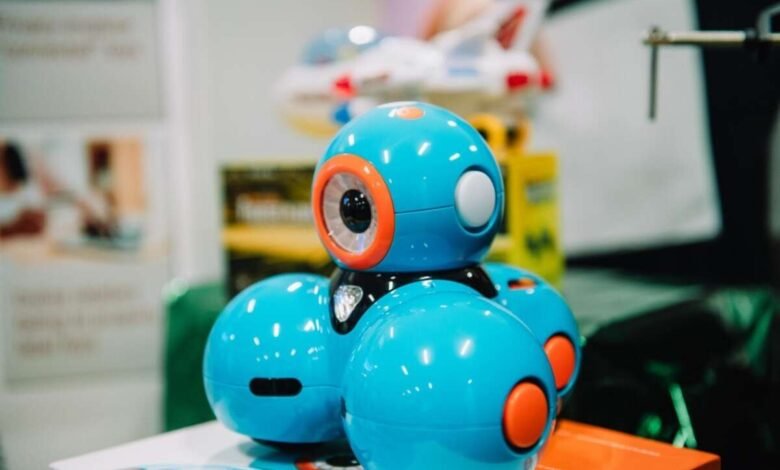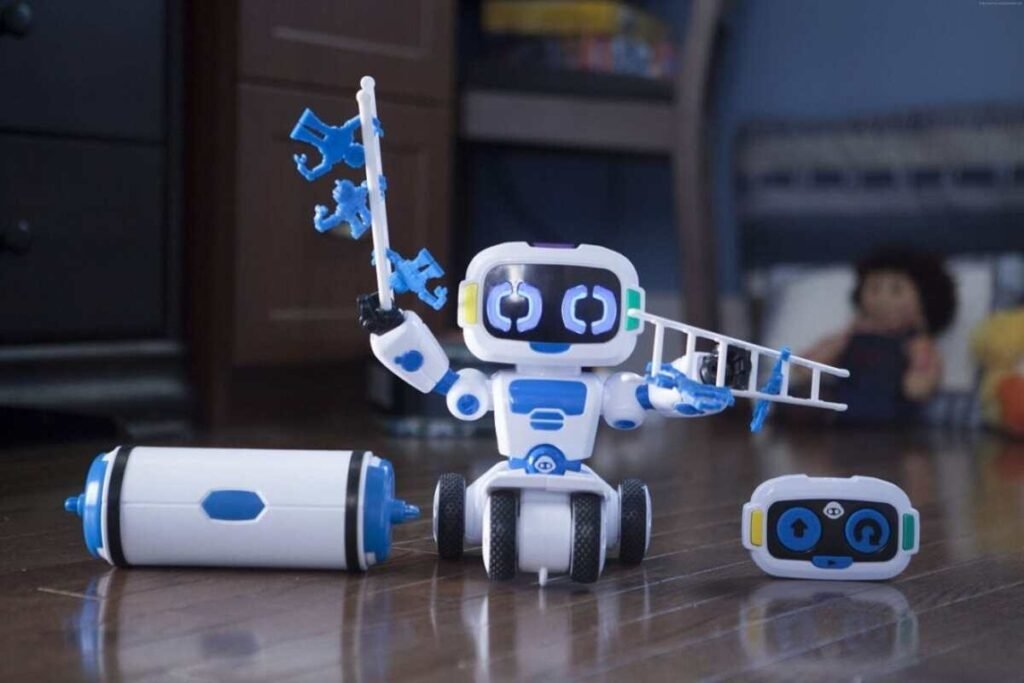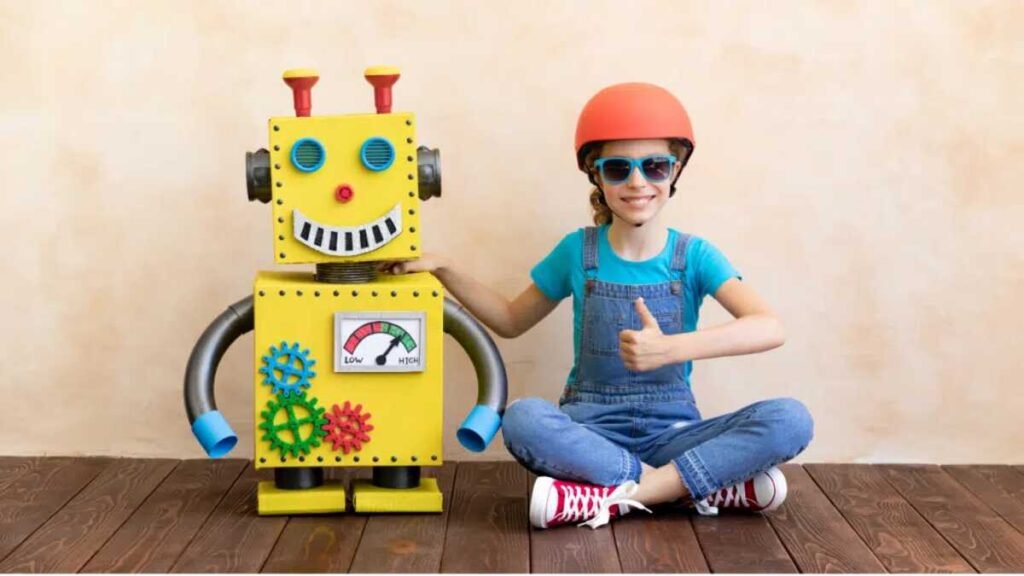The Smart Toys Market in 2024: Where Play Meets Headway

The Smart Toys Market in 2024 has seen a remarkable evolution over the past decade. In 2024, this industry stands at the intersection of cutting-edge technology and traditional play, offering innovative products that are reshaping how children learn, play, and grow. These toys are not only enhancing the play experience but also contributing significantly to early childhood development.
The Smart Toys Market in 2024: Importance of Smart Toys in Modern Play
The significance of smart toys in today’s playtime cannot be overstated. As digital natives, today’s children are growing up in an environment rich with technology. Smart toys bridge the gap between digital experiences and physical play, creating an engaging and dynamic learning environment. They cater to various developmental needs, from improving cognitive skills to encouraging physical activity and fostering creativity. In an age where screens dominate, smart toys offer a balanced approach by integrating physical interaction with digital content. “The Smart Toys Market in 2024”
Growth Trends and Market Projections
The smart toys market is projected to continue its robust growth trajectory. Valued at approximately $11 billion in 2023, it is expected to reach $24 billion by 2028, driven by increasing consumer demand for innovative educational tools and interactive entertainment. Factors such as rising disposable incomes, technological advancements, and a growing emphasis on STEM education are fueling this expansion. Key markets include North America, Europe, and the Asia-Pacific region, with emerging economies showing significant potential.
The Smart Toys Market in 2024: Types and Categories of Smart Toys

Educational Smart Toys
Educational smart toys are designed to make learning fun and engaging. These toys often incorporate elements of gamification to teach complex concepts in a simplified manner. “The Smart Toys Market in 2024”
STEM-based Toys
STEM-based toys focus on science, technology, engineering, and mathematics. They help children develop critical thinking and problem-solving skills through hands-on activities. Examples include robotic kits, electronic building sets, and interactive science experiments.
Language Learning Toys
Language learning toys aim to enhance vocabulary and language skills. These include interactive storybooks, language-speaking robots, and apps that teach new languages through play. They often use speech recognition and AI to provide personalized feedback and learning experiences. “The Smart Toys Market in 2024”
The Smart Toys Market in 2024: Cognitive Development Toys
These toys are designed to boost cognitive abilities such as memory, attention, and logic. Puzzle games, memory challenges, and brain-teasing activities fall under this category.
Entertainment Smart Toys
Entertainment smart toys are geared towards providing fun and interactive play experiences. They often incorporate advanced technologies to create immersive environments.
Interactive Robots
Interactive robots are among the most popular smart toys. They can perform a range of activities, from dancing and singing to answering questions and playing games. Examples include robotic pets and programmable robots that teach coding basics. “The Smart Toys Market in 2024”
The Smart Toys Market in 2024: Augmented Reality Toys
AR toys blend physical and digital play by overlaying virtual elements onto the real world. This technology can transform a simple toy into a gateway to a magical world. Popular AR toys include treasure hunts, educational globes, and interactive coloring books.
Virtual Reality Toys
VR toys offer immersive experiences that transport children to different worlds. VR headsets and accessories can be used to explore virtual environments, play games, and even attend virtual classes. These toys provide a unique way to experience content and enhance learning.
The Smart Toys Market in 2024: Health and Wellness Smart Toys
Health and wellness smart toys promote physical activity and mental well-being. “The Smart Toys Market in 2024”
Fitness and Activity Trackers
Fitness trackers designed for children encourage them to stay active. They often come in the form of wristbands or clip-on devices that track steps, active minutes, and even sleep patterns.
Therapeutic Toys
Therapeutic toys are used to support children with special needs or health conditions. They include sensory toys, calming devices, and interactive therapy aids that help manage anxiety, autism, and other developmental disorders.
Mental Health Toys
These toys focus on emotional well-being and mental health. They include interactive apps and devices that teach mindfulness, relaxation techniques, and emotional regulation.
Customizable and Programmable Toys
Customizable and programmable toys allow children to personalize their play experiences and learn programming skills. “The Smart Toys Market in 2024”
The Smart Toys Market in 2024: DIY Kits
DIY kits provide components and instructions for building various projects, from simple models to complex robots. These kits foster creativity and hands-on learning.
Coding and Programming Toys
Coding toys introduce children to programming languages and concepts. They range from simple coding boards to advanced robotic systems that can be programmed to perform specific tasks.
Personalization Options
Many smart toys offer personalization options, allowing children to customize characters, settings, and gameplay according to their preferences. This enhances engagement and makes playtime more enjoyable.
The Smart Toys Market in 2024: Key Features and Innovations

Artificial Intelligence Integration
AI integration in smart toys allows for adaptive learning, personalized interactions, and responsive behavior. AI-driven toys can understand and respond to children’s actions, providing a more engaging and interactive experience. “The Smart Toys Market in 2024”
Internet of Things (IoT) Connectivity
IoT connectivity enables smart toys to connect with other devices and share data. This feature allows for seamless integration with smart home systems, creating an interconnected play environment.
The Smart Toys Market in 2024: Voice Recognition and Control
Voice recognition technology allows children to interact with toys using voice commands. This feature is particularly popular in educational toys, where children can ask questions and receive answers in real-time.
Augmented Reality (AR) and Virtual Reality (VR) Capabilities
AR and VR capabilities transform the play experience by creating immersive environments. These technologies are used in a variety of smart toys, from educational tools to entertainment systems. “The Smart Toys Market in 2024”
Biometric Feedback and Adaptive Learning
Biometric feedback technologies, such as heart rate monitors and facial recognition, provide data that can be used to tailor the play experience to the child’s emotional and physical state. Adaptive learning systems use this data to adjust the difficulty and content of the toys.
Benefits of Smart Toys

Educational Advancement
Smart toys contribute significantly to educational advancement by making learning fun and interactive. They help children grasp complex concepts in subjects like math, science, and languages through engaging activities and games.
The Smart Toys Market in 2024: Cognitive and Motor Skill Development
These toys enhance cognitive abilities and motor skills. Interactive puzzles, coding games, and DIY kits improve problem-solving skills, hand-eye coordination, and logical thinking.
Enhanced Entertainment Experience
Smart toys offer a richer entertainment experience compared to traditional toys. Features like AR, VR, and AI create immersive environments that captivate children’s attention and imagination. “The Smart Toys Market in 2024”
Personalized Learning and Play
Personalization options allow smart toys to adapt to individual learning styles and preferences. This ensures that each child receives a unique and tailored play experience that caters to their needs and interests.
Encouraging Physical Activity and Wellness
Health-focused smart toys encourage children to stay active and maintain a healthy lifestyle. Fitness trackers, interactive sports equipment, and therapeutic toys promote physical activity and mental well-being.
The Smart Toys Market in 2024: Challenges and Concerns
Privacy and Data Security Issues
One of the main concerns with smart toys is the potential for privacy and data security breaches. These toys often collect and store personal data, which can be vulnerable to hacking and misuse. “The Smart Toys Market in 2024”
High Cost and Accessibility
Smart toys are generally more expensive than traditional toys, making them less accessible to some families. This cost barrier can limit the reach and impact of these innovative products.
Screen Time and Dependency
Excessive use of smart toys can contribute to increased screen time and potential dependency on technology. Balancing digital and physical play is crucial to ensure healthy development.
The Smart Toys Market in 2024: Compatibility and Technological Integration
Ensuring compatibility and seamless integration with other devices and systems can be challenging. Smart toys need to work smoothly with various platforms and technologies to provide a cohesive play experience.
Market Analysis and Trends

Regional Market Insights
North America
North America is the largest market for smart toys, driven by high disposable incomes, advanced technology adoption, and strong emphasis on STEM education.
Europe
Europe follows closely, with a growing market for educational and entertainment smart toys. Countries like Germany, the UK, and France are leading in smart toy adoption. “The Smart Toys Market in 2024”
Asia-Pacific
The Asia-Pacific region is experiencing rapid growth in the smart toys market. Rising incomes, increasing urbanization, and a strong focus on education are key drivers in countries like China, Japan, and India.
Latin America
Latin America’s market is emerging, with a growing demand for innovative educational tools. Brazil and Mexico are the main contributors to the market growth in this region.
Middle East and Africa
The Middle East and Africa are showing potential for growth in the smart toys market, particularly in the Gulf countries where there is a high adoption rate of advanced technologies.
The Smart Toys Market in 2024: Demographic Trends
Age Groups
Smart toys are designed for various age groups, from toddlers to teenagers. The demand for educational toys is highest among preschool and elementary school children, while entertainment and coding toys are popular among older kids.
Parental Preferences
Parents are increasingly seeking toys that offer educational value and promote healthy development. There is a growing preference for toys that combine learning with play, encouraging cognitive and physical growth.
Gender Trends
While traditionally, toys were marketed separately for boys and girls, the smart toys market is increasingly gender-neutral. “The Smart Toys Market in 2024”
The Smart Toys Market in 2024: Sales Channels
Online Retail
Online retail is the most popular sales channel for smart toys, offering a wide range of products and convenient shopping experiences. E-commerce giants like Amazon and specialized toy stores dominate this space.
Brick-and-Mortar Stores
Physical toy stores and department stores continue to play a significant role in the smart toys market. They provide an opportunity for hands-on experience and immediate purchase.
Direct-to-Consumer
Some manufacturers are adopting direct-to-consumer models, selling their products through their websites and pop-up stores. This approach allows for better control over branding and customer experience. “The Smart Toys Market in 2024”
Read More: Supertrend Indicator





